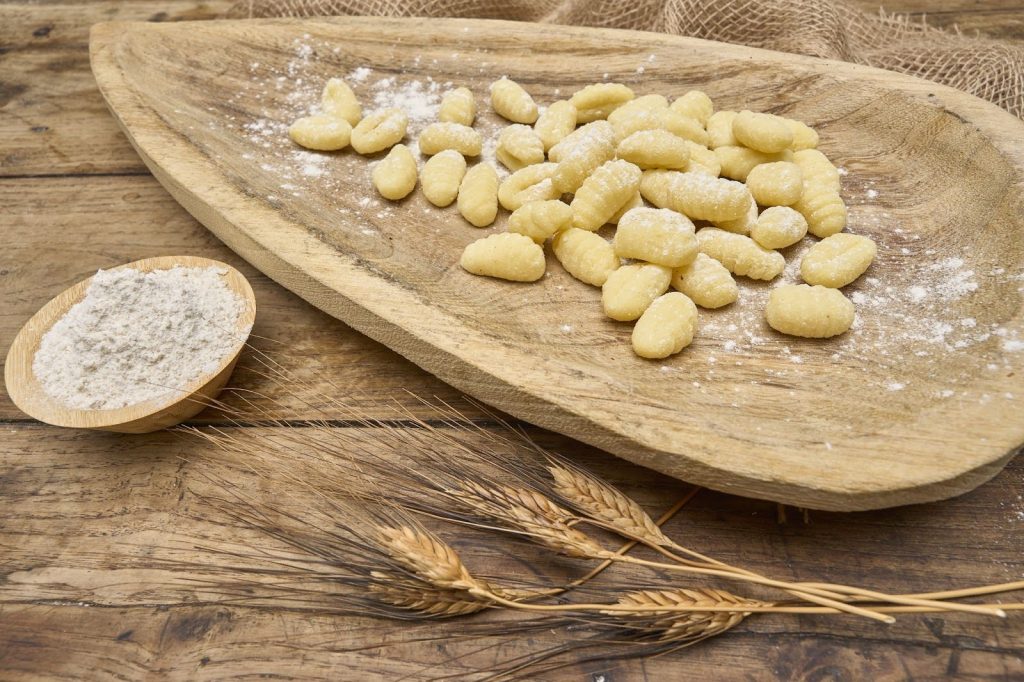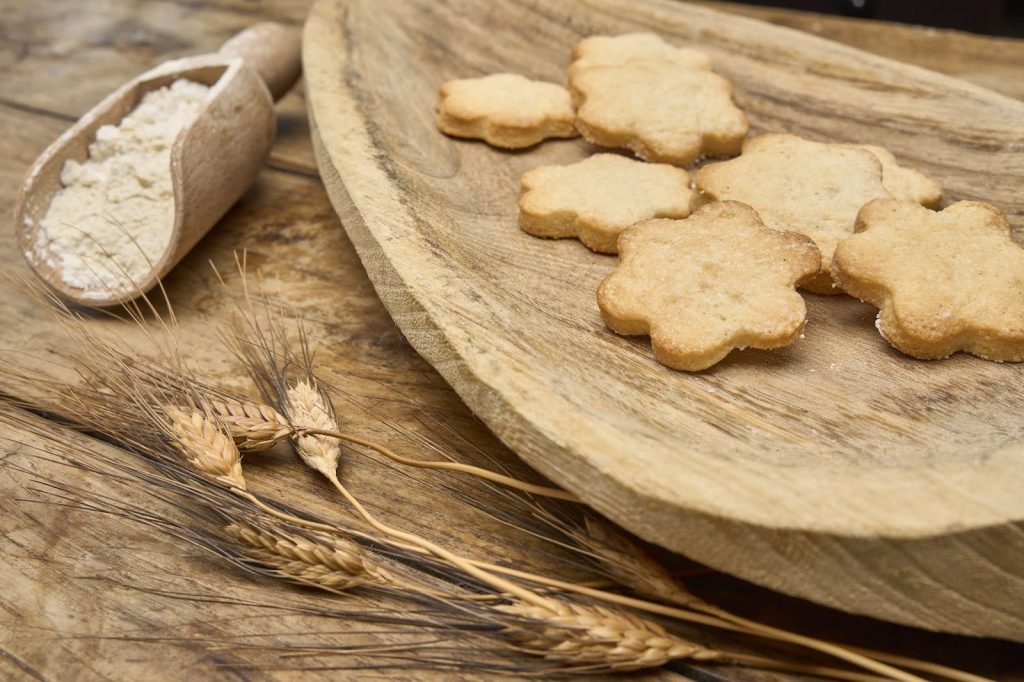9 December 2024
Type and “strength” make all the difference, so here is the guide to choosing the right product for cakes, cookies, pizzas and pasta.
Do you need to prepare a perfect cake, cookies, pizza or fresh pasta? The “Pure Flour from Europe” program supported by ITALMOPA (the Italian Milling Industry Association) and co-funded by the European Union, which promotes the export of organic soft wheat flour, durum wheat flour and semolina produced in Europe to Canada and the USA, comes to the rescue. The international program illustrates the differences and uses for each type of organic wheat flours and semolina.

Organic flour obtained from milling soft wheat is suitable for the preparation of cakes, bread, fresh and egg pasta, and is classified as follows: type 0, 00, 1, 2 and whole wheat flour. Type 00 flour is white with a neutral flavour and is the most refined; during grinding both the bran and the wheat germ are removed. The result is low in protein and rich in starches and sugars, excellent for preparing some leavened products such as focaccia and cakes, but also for fresh pasta, cookies and as a thickener for sauces. Type 0 flour is less refined although similar to 00, and is excellent for preparing an elastic dough with a good gluten mesh, and so ideal for preparing bread, pizza and leavened cakes. Type 1 flour contains more bran and wheat germ, giving it a slightly darker colour and a more pronounced aroma. Considered to be a semi whole wheat flour, it is ideal for baking rustic breads. Type 2 flour is the one that comes closest to whole meat flour, and is mainly used for bread-making, often combined with white flours. Whole wheat flour contains all parts of the grain, and its nutrients remain intact, but that makes it more difficult to get soft, airy results. It is mostly used in bread-making.

From the milling of durum wheat, on the other hand, we obtain organic semolina. It is yellower in color and with higher levels of protein, such as gluten, and is suited to the production of industrial dry pasta, various pastries, cookies, breads and breadcrumbs. Depending on how coarsely it is ground, it is possible to produce the ideal “semola” – semolina for the preparation of fresh pasta, “semolino” – coarse durum wheat semolina, excellent for custards and Roman-style gnocchi; and “semola rimacinata” or re-milled semolina, which is used for leavened products. Semolina is rich in vitamins, fiber and mineral salts, and boasts a lower glycemic index than soft wheat flours.
Organic wheat flours and semolina are undoubtedly the main ingredient for most leavened products, from cakes to pizzas, but for perfect results you also need to know the differences between the “strength” of the flours, something which is dictated by the amount of gluten a flour contains. The more gluten a flour has, the stronger it will be, and this strength is defined according to the elasticity of the dough formed when water is added. Therefore, the “strength” of a flour refers to the ability of the dough to develop an elastic and resistant gluten structure during processing and leavening. It is mainly determined by the quantity and quality of the proteins present in the flour, especially gluten proteins.
The strength of durum wheat flour is generally high, and that’s why it is often used for baked goods that require a firmer texture and more resistant gluten, such as dry packaged pasta. In soft wheat, the strength of the flour is often classified in three categories: weak, medium, and strong, depending on the protein content and “strength” of the gluten. The choice of organic flour with the right “strength” for the type of product you want to make is essential in order to obtain high quality results.
To sum up on the subject of “strength”: “weak flour” is used for making light pastries, such as soft cakes, cookies and for short crust pastry. “Medium flour” is used for making bread, pizza, focaccia and sponge cake. “Strong flour” is for breads with a long proving time. It is important to remember that a strong flour has a greater resistance to processing, can absorb more water and retain more carbon dioxide. The result is a soft dough, which is perfect for making brioche and panettone. Weak flours, on the other hand, absorb less water and form less of a gluten network, so they are mainly used for crumbly products, such as cookies or breadsticks.

